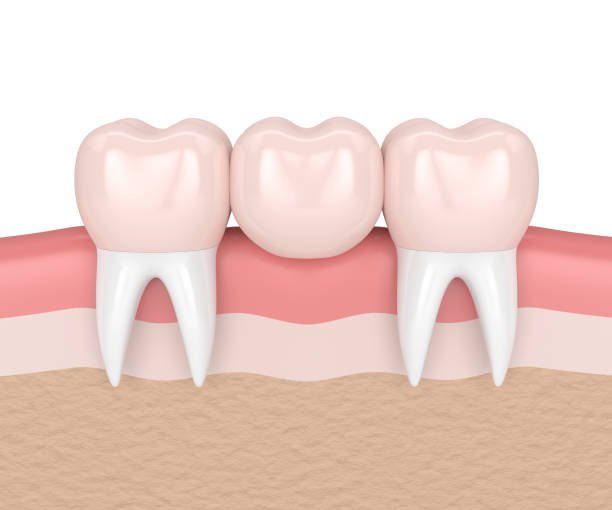
What you need to know about dental bridges

Dental bridges are false teeth that can help restore your smile and regain your self-confidence. The main purpose is to “bridge” the gap created by one or two missing teeth.
This type of restoration is made up of two or more crowns for the teeth on either side of the gap and a false tooth in between. The tooth on either side of the gap which is used to anchor the dental bridge is called abutment tooth.
The false teeth are called pontics and can be made from gold, alloys, porcelain, zirconia, or a combination of these materials. Dental bridges are supported by natural teeth or implants. You can have a bridge only if you have enough strong teeth with good bone support.
Types of dental bridges
There are different types of dental bridges. Your dentist will recommend you the most appropriate one depending on the location of the missing tooth/ teeth and the condition of your mouth.
1. Traditional bridges
These bridges are the most popular type of bridge. They are used if there are natural teeth on each side of the gap where the tooth is missing.
2. Maryland bridges (Resin-bonded bridges)
Like traditional bridge, Maryland dental bridges use two natural abutment teeth, one on each side of the gap. However, while a traditional bridge uses dental crowns on the abutment teeth, a Maryland bridge uses a metal or porcelain frame that is tied to the back of the abutment teeth.
Like a traditional bridge, a Maryland bridge can only be used when you have a natural tooth on each side of the gap caused by missing teeth or teeth.
3.Cantilever bridges
The Cantilever dental bridge is used when the patient does not have healthy teeth on one side of the missing tooth. The bridge is fixed on the tooth that will serve as an anchor point. The false tooth is supported only on one side.
4. Implant-supported bridges
As the name suggests, the bridges supported by the implant use dental implants. Usually, an implant is surgically placed for each missing tooth, and these implants hold the bridge in place. If an implant is not possible for each missing tooth, the bridge may have a pontic suspended between two crowns supported by the implant.
Considered the most powerful and stable system, an implant-supported bridge typically requires two surgeries:
- one that incorporates implants into the jaw;
- a second surgery to place the bridge
It may take several months for the procedure to be fully completed.
How do I get a traditional dental bridge?
During the first visit, the abutment teeth are prepared. Your dentist will remove a little portion of enamel to allow room for a crown to be placed over them.
Next, the dentist will make impressions of your teeth to serve as a model from which the bridge, pontic and crowns will be made by a dental laboratory.
Your dentist will give you a temporary bridge. In a couple of weeks, during the second visit, your temporary bridge will be replaced by the permanent bridge. And this is all.
A dental bridge can last 5 to 15 years and even more. With good oral hygiene (brush your teeth twice a day, two minutes each time, floss daily) and regular checkups and professional cleanings, a bridge will last at least 10 years.
To conclude, dental bridges are an alternative when you have missing teeth. If you think you are eligible for a bridge, a fixed dental bridge in Berwin or another dental restoration, call Dr. Arhiri today to make an appointment at 610.647.761. Dr. Arhiri will give you all the information you need and will recommend you what best suits you, considering your medical history.



